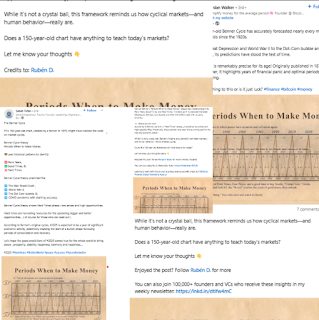My Introduction to Modern Art
In September 2022 I was in New York for work and one weekend I paid a visit to the Museum of Modern Art (MoMA). I am not an art fan, in fact I think the only previous time I was in a gallery was a school tour in Dublin when I was 10. However, museums are a great place to kill a few hours alone in a city so off I went to MoMA armed only with the knowledge that Jackson Pollock seemed to regularly be an answer in the art round of University Challenge.
The exhibition started on the fifth floor with work from the mid 1800's and descended in chronological order until you reach contemporary art (works done by living artists) on the first floor. Initially I liked some of what I saw and was indifferent about a lot. One part that stood out to me was how Picasso's abstract cubism style influenced more modern works that focused on shapes and symmetry without depicting an image.
I do not know if my interpretation is correct, but as I descended through the galleries I got the impression that a story was being told as the styles evolved through the decades. However, I had no idea what this story was. Kind of like listening to a song in a foreign language, you understand that the lyrics have a message, and it even sounds nice, but you have no idea what they are actually saying. So driftng through the first couple of floors I enjoyed trying to recognize patterns between different artists, particularly across different eras, but I still had a sense of lacking some appreciation for what I was seeing.
This feeling of pleasant contentment shattered once I hit work from around 1980's and onwards. I didn't mind paintings becoming more minimalist featuring shapes and lines and little else. I actually quite like symmetry and contrasting colours. But modern "sculptures", and I use that word as condescendingly as possible, were totally lost on me. The ones I recall were not aesthetically pleasing and required no skill in artistic craft. The "art" seemed to solely rely on the "message the artist wanted to convey" according to the plaque beside each piece. Can something be art if it requires a detailed explanation why it is so? As I wandered through the final floor I was falling into further into state of bewilderment and infuriation. I felt as if the art world was playing some inside joke on the uninitiated.
For example, here is Robert Gober's Untitled work from 1986.
This is one of the most pretentious, vomit inducing paragraphs I have ever read. This is a bed. It is eternally empty because it is in a museum. Move it 100m east onto 5th Ave and I assure you it would not be empty. The mental gymnastics required to relate it to the AIDS crisis I could not fathom. This was one of many examples of taking an unremarkable object, assigning a seemingly arbitrary meaning to it and calling it art. Surely the emperor has no clothes here?
You would be forgiven for wondering why I have included a photo of your toddler's most recent Crayola escapade. This is actually one of many widely celebrated pop art works by JMB that hang in museums all over the world. Go figure!






Comments
Post a Comment